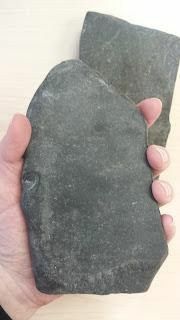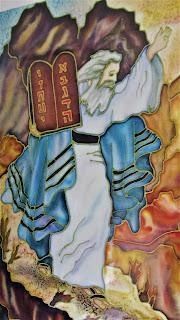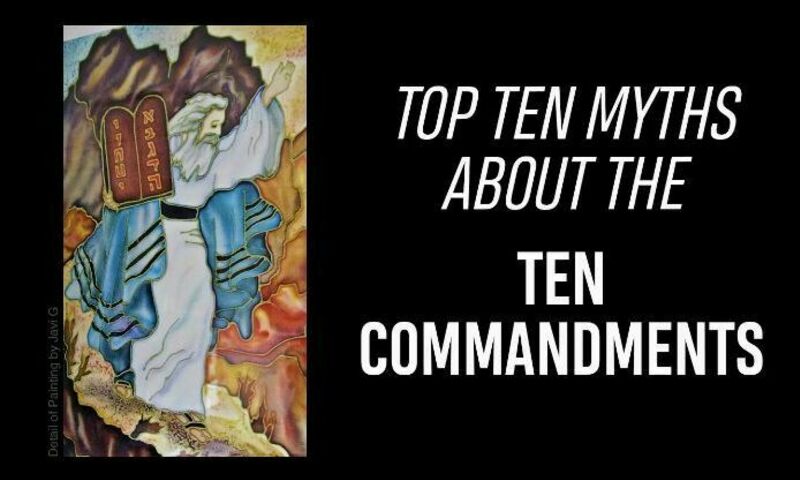This is the first post in a three-part series on the top ten myths about the Ten Commandments. Part 2 and Part 3 will be published over the course of the next three weeks.
"The Ten Commandments" are among the most well-known passages of the Old Testament. Even those who do not attend church have at least a vague idea of what they contain. However, the most familiar passages are often encrusted with the thickest layers of distortion because of their long interpretive history. This is certainly the case with the Ten Commandments. How many of these myths have you believed?
Myth #1. The Ten Commandments embody a timeless, universal ethic. People often assume that because the Ten Commandments were written in stone, they apply to everyone throughout history, unlike the myriad of other specific laws in the Torah, which were intended for ancient Israel. But this line of thinking doesn't work. The Ten Commandments are prefaced with a clear statement of their specific audience: "I am the LORD your God who brought you out of the land of Egypt, out of the house of slaves" (Exodus 20:2). The commands contain language very specific to that ancient culture ("Do not covet your neighbor's ox"). And they are never communicated to Israel's neighbors. When the prophets pronounce judgment on Israel's neighbors, they are not measured against the Ten Commandments. Instead, they are measured against a standard of basic human decency. Are they arrogant jerks? Have they taken advantage of other nations' misfortune or been unduly violent? None of these assessments clearly arises from the Ten Commandments. To me the most striking example of the specific audience of the Ten Commandments is the "Name Command" (Exodus 20:7). See Myth #10, in part 2 of this series.
Myth #2. The Ten Commandments were Israel's way of earning salvation. No, no, no! I have often heard this mischaracterization of Old Testament law: “The Israelites had to earn their salvation, but we have grace because of Jesus.” This could not be farther from the truth. God did not send Moses to Egypt to tell the people, “Hey, I can get you all out of here, I just need you to sign on the dotted line saying that you agree to keep all these commandments.” No, the commandments were given after they were already rescued, showing them how to live in freedom. They are the conditions of ongoing freedom. “Do you want to remain free? Here's a recipe for success.” They are also a gracious gift from a God who makes himself accessible and calls Israel his “treasured possession” (Exodus 19:5-6). The Israelites did not have a different means of salvation in the Old Testament. Reconciliation with God has always been available to those who respond to his grace by trusting his promise and accepting his means of forgiveness for sin.
Myth #3. The Ten Commandments are a summary of Israel's laws. It would be more accurate to say that they are the seed or source of Israel's laws. Other instructions flesh out specific ways of living faithfully to what God commands, but they also contain other domains of instruction that do not relate directly to any of the Ten Commandments, such as agricultural laws, injunctions to care for widows and orphans, or instructions for Israel's future king.
Myth #4. The Ten Commandments are divided into two groups: laws that pertain to God and laws that pertain to others. This unfortunate misunderstanding goes back many centuries and is deeply entrenched. To cite just one example, the Heidelberg Catechism states:
Q. How are these commandments divided?
A. Into two tables. The first has four commandments, teaching us how we ought to live in relation to God. The second has six commandments, teaching us what we owe our neighbor. (Q&A 93)

But this approach betrays an inadequate view of how covenants work. These “Ten Words” are the stipulations of the covenant God made with the Israelites at Sinai (see Myth #5). In the covenant community, all of life is an expression of worship and loyalty to the God who has committed himself to these people. After David sins by lusting after his neighbor's wife, committing adultery with her, and then murdering her husband, he responds to the prophet Nathan's confrontation by saying, "I have sinned against the LORD." Later he prays to the LORD, "Against you, you only, have I sinned and done what is evil in your sight" (Psalm 51:4a). Conversely, if just one Israelite rebels against the LORD, it puts the entire community at risk of God's judgment. An obvious example is Achan, who kept some of the plunder of Jericho in spite of God's clear instruction not to do so, resulting in Israel's defeat at Ai (Joshua 7). All ten of these commandments reflect a proper disposition toward God, and all ten affect the entire covenant community. By keeping them, the Israelites not only honored God, but also ensured that the community of faith could flourish.
Myth #5. The Ten Commandments did not all fit on one stone tablet. This may be the most popular misconception of all. The vast majority of artistic representations of Moses and the two tablets presume that he's holding "volume 1" and "volume 2." However, we know from the biblical text that the commands were written on both sides of the tablets:
“And Moses turned and he went down from the mountain, and the two tablets of the [covenant] document (עֵדוּת) [were] in his hand, tablets inscribed on both sides, inscribed on front and back.” (Exodus 32:15)

The words could easily fit on two sides of a single stone tablet, even if that tablet was not much larger than Moses' hand. So why make two? For the answer we must turn to other ancient Near Eastern treaty documents. What we find is that it was standard practice to make duplicate copies of a treaty document, etched in stone. One copy belonged to each party. Each copy was customarily placed in that community's most important temple, so that their respective gods could see the terms of the treaty and watch to ensure that they remained faithful. Here's a Hittite example from a treaty between Suppiluliuma and Shattiwaza:
“A duplicate of this tablet has been deposited before the sun-goddess of Arinna, because the sun-goddess of Arinna regulates kingship and queenship. In Mitanni land [a duplicate] has been deposited before Teshub, the lord of the [sanctuary] of Kahat. At regular [intervals] shall they read it in the presence of the king of the Mitanni land and in the presence of the sons of the Hurri country.” (Kitchen and Lawrence, Treaty, Law and Covenant in the Ancient Near East, No. 56A)
In the case of Yahweh's covenant with Israel, there was only one temple (or tabernacle), and therefore Yahweh was the only deity who could ensure Israel's covenant faithfulness. Because there is no higher power who can hold Yahweh accountable, he ensured his own faithfulness as well.

I'll address 5 more myths about the Ten Commandments in my next two posts. In the meantime, if you're looking for a more in-depth discussion of these matters, you can read more in chapter 4 of my book, Bearing YHWH's Name at Sinai: A Reexamination of the Name Command of the Decalogue (Eisenbrauns, 2018).
This post and other resources are available at Carmen Imes’ blog, Chastened Intuitions: Reading Scripture and Reading Life through Trained Eyes of Faith.
 Biola University
Biola University

.jpg)
.jpg)

